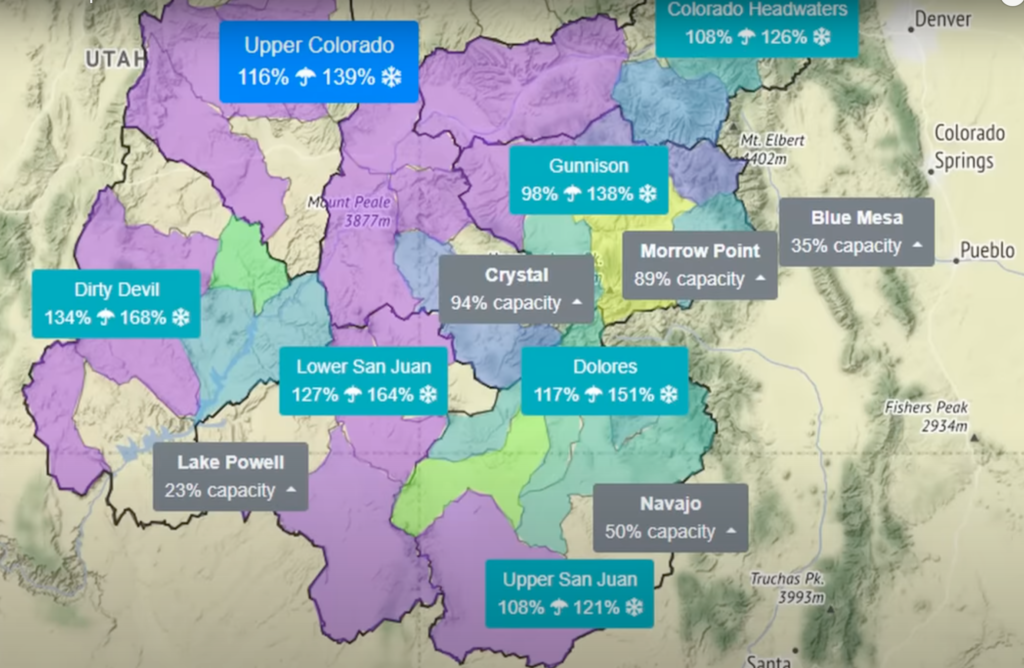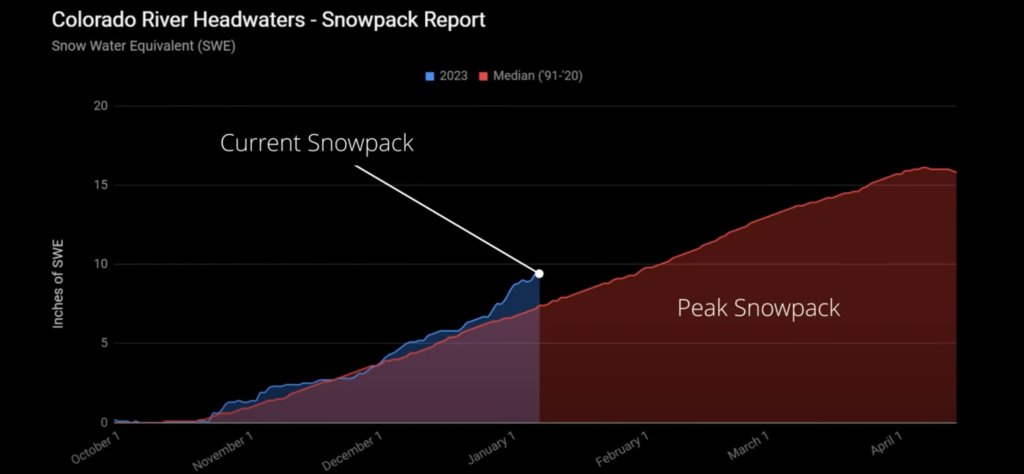The recently measured snowpack levels in the Sierras and the Upper Colorado River Basin are nearing 200% of their historical averages for this time of year. While this level of snowpack will no doubt help ease the drought conditions in the west, it will not solve the problem. It will take years of above average rainfall to refill reservoirs and the Colorado River Basin storage storage lakes.
According to Karla Nemeth, director of the California Department of Water Resources, “While we see a terrific snowpack, and that in and of itself may be an opportunity to breathe a sigh of relief , we are by no means out of the woods when it comes to drought.”
Western states will likely face years of at least regional drought conditions as reservoirs remain well below capacity, even with this years robust rainfall and snowpack.
The “triple dip La Nina” weather pattern that returned to the Pacific Coast is beginning to fade, according to the World Meteorological Organization. It is unknown at this point if we can continue to expect above average rain patterns in the west, or a return to weather patterns that deliver less rainfall as we have seen in recent years.
Some western states, including California and Arizona, plan to continue water conservation efforts and even some water restrictions in certain areas.
While the rainy season on the West Coast is approaching the halfway point, Northern Arizona has its own monsoon season that usually provides us additional rainfall not experienced along the coast.
The City of Williams benefits from the increased rain and snow by having its lakes and reservoirs filled, as well as ground recharge of the water table for its wells. The Williams area is water self sufficient and does not import water from the Colorado River or elsewhere.

